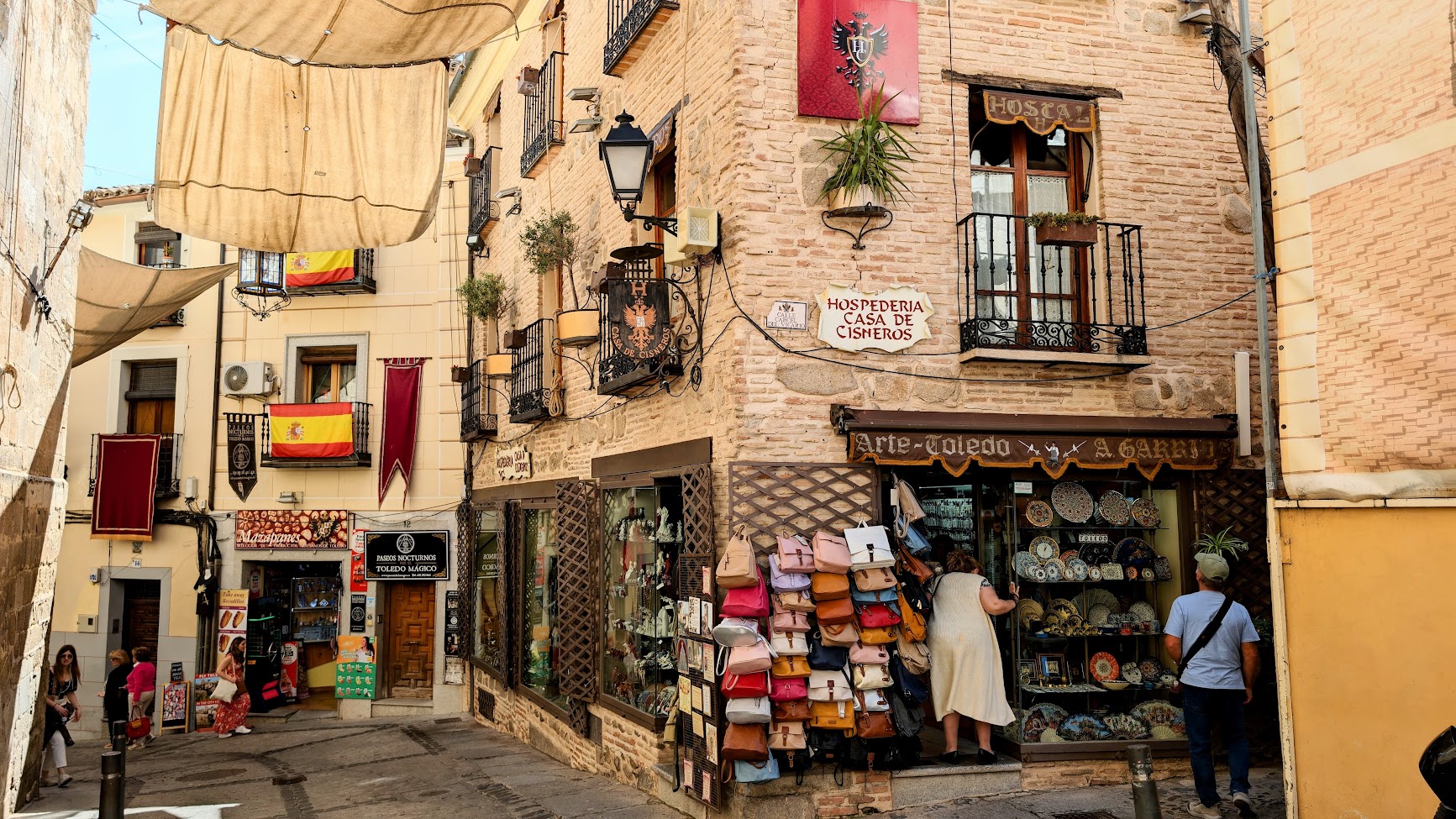Be forewarned: this post involves genealogy. Eye-rolling is allowed…even expected.
On Friday, we took a 35-minute train ride from Madrid to the ancient city of Toledo. Toledo’s rich 2000-year history, narrow medieval streets, and eclectic architecture left us amazed when we visited a few years ago. It was a Roman colony, Visigothic and Islamic Al-Andalus capital, and later, Castile’s political and military center. It was an amazingly tolerant place where Christian, Muslim, and Jewish cultures flourished together.
On a free walking tour, we witnessed the city’s diverse cultural heritage through landmarks like mosques, synagogues, grand cathedrals, and a newly unearthed Roman bath complex. The tour refreshed our memories of Toledo’s significance and readied us to complete the mission that inspired our return visit – to find my 26th (26 generations) great-grandfather, Alfonso VII, King of León and Castile. (Cue the eye-rolling!) He was quite the guy. You can find out more. https://turismoenleon.org/en/leonese-monarchs/alfonso-vii/
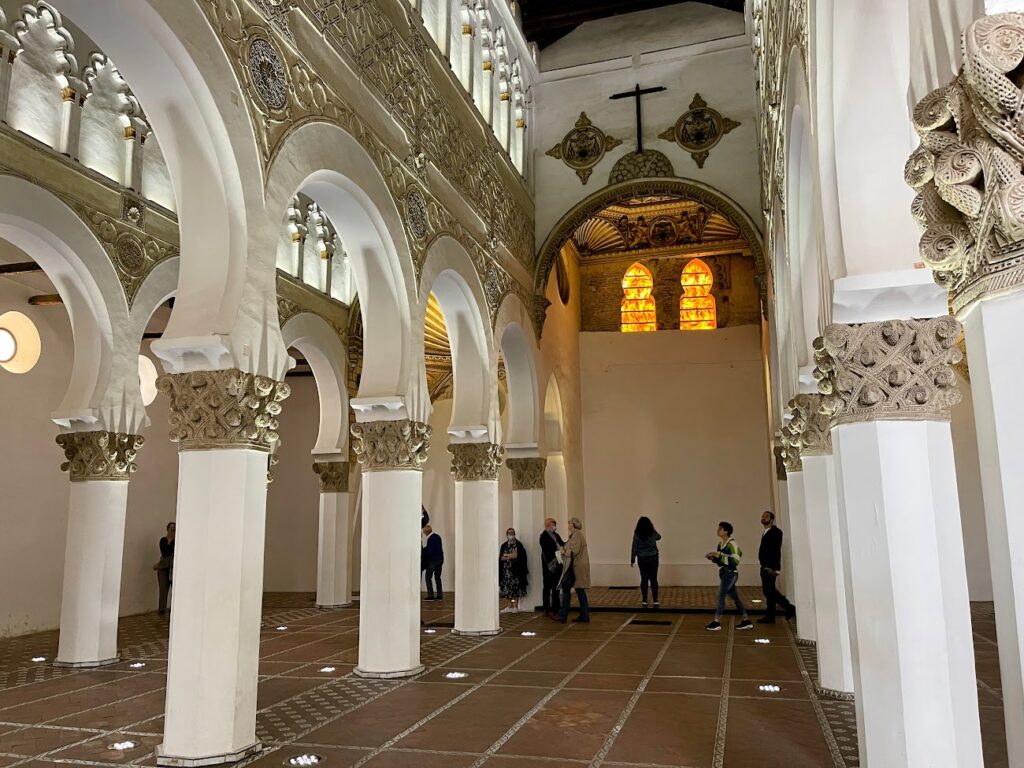
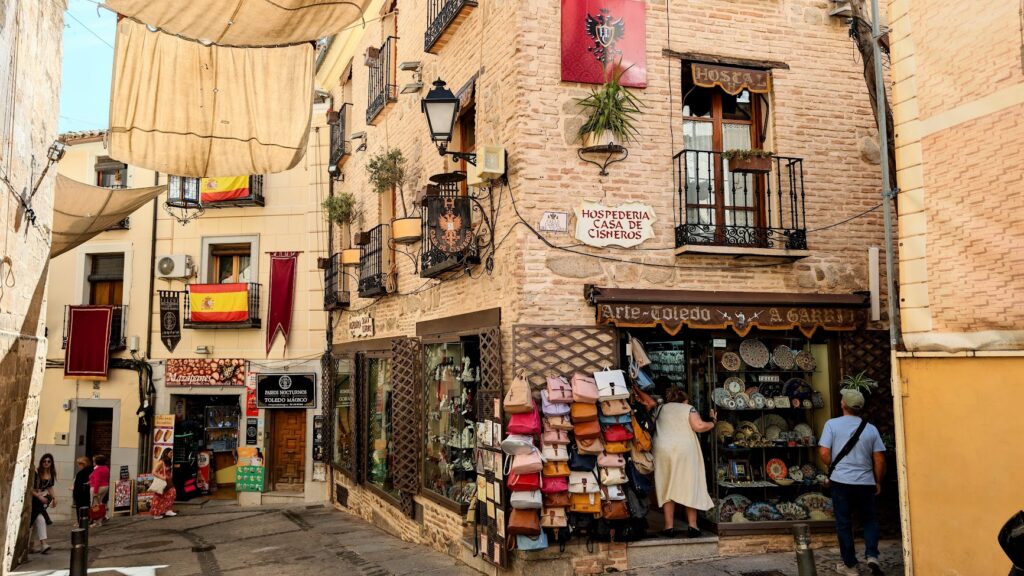
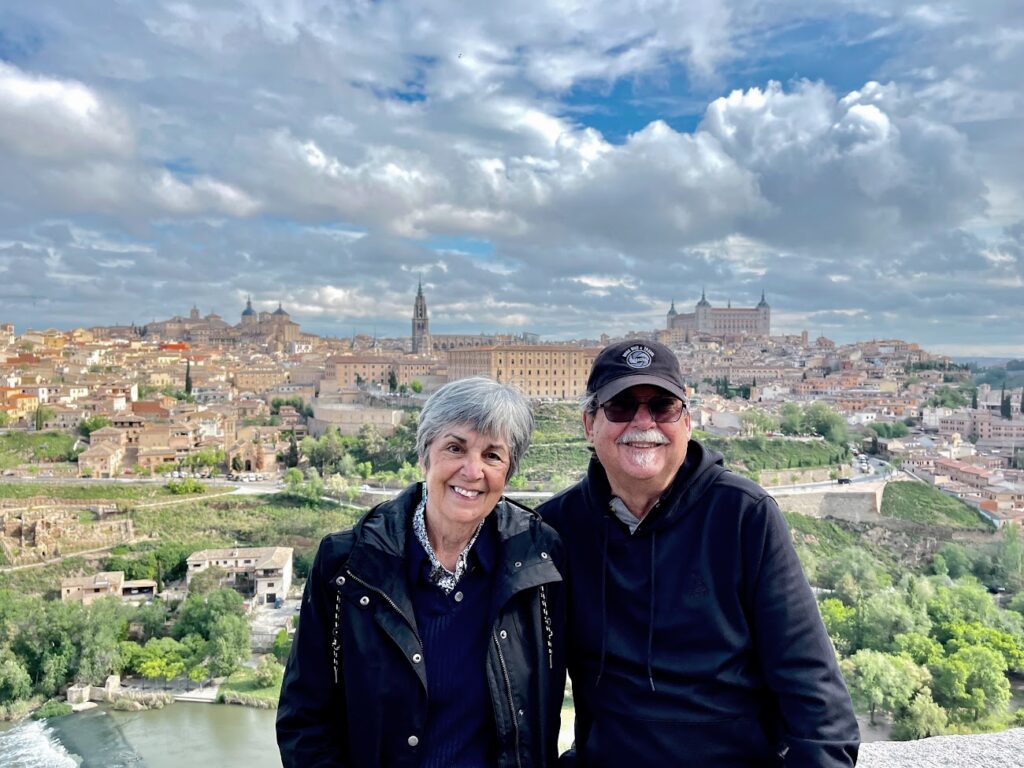
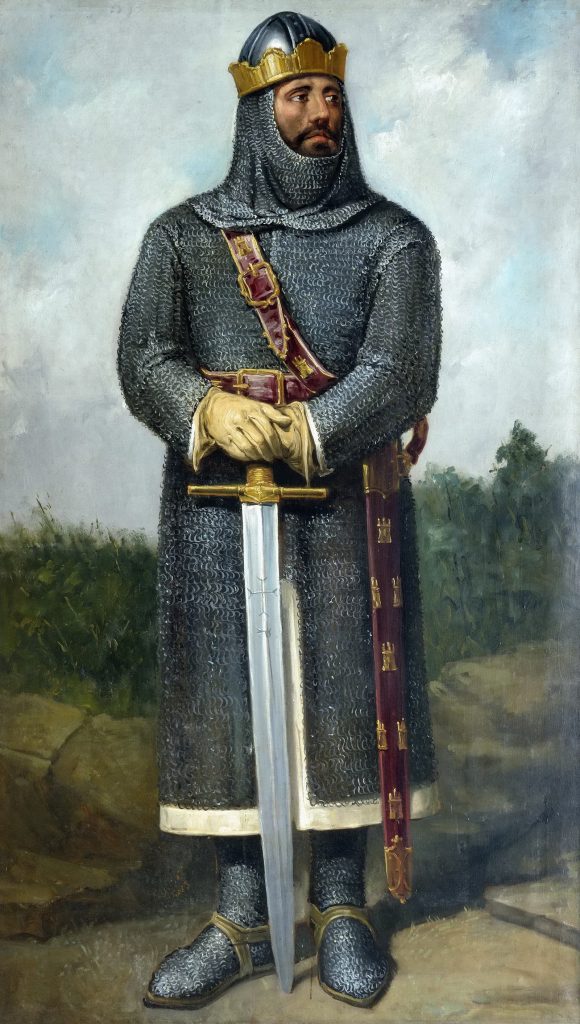
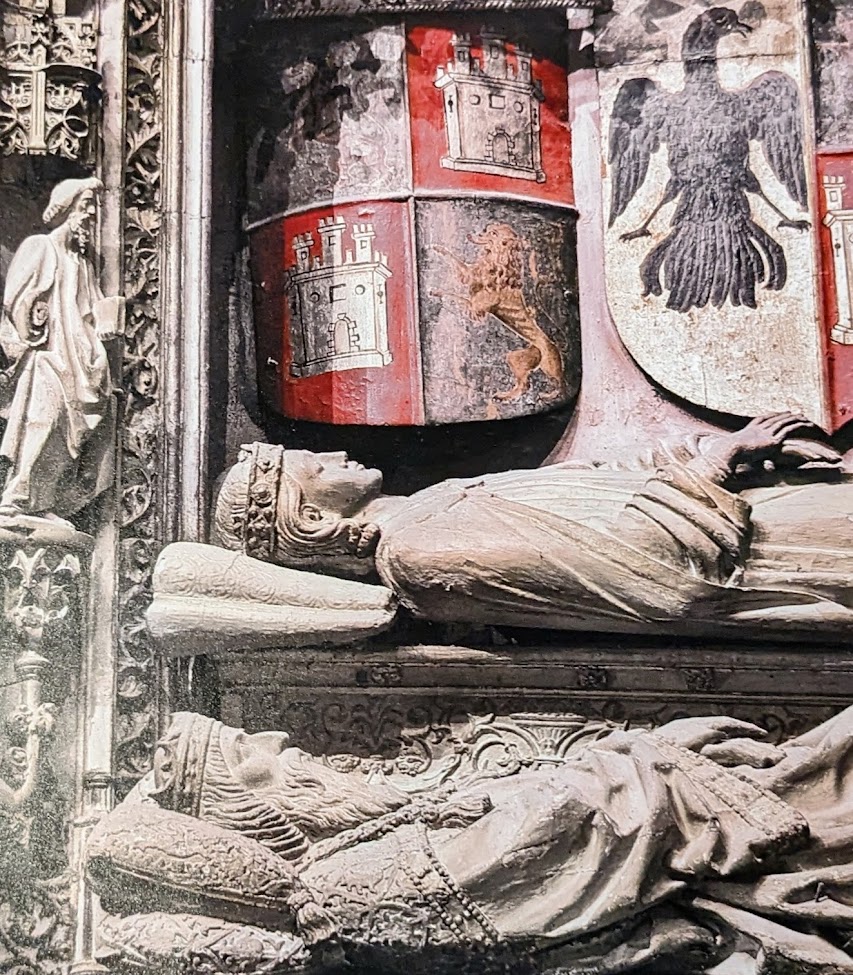
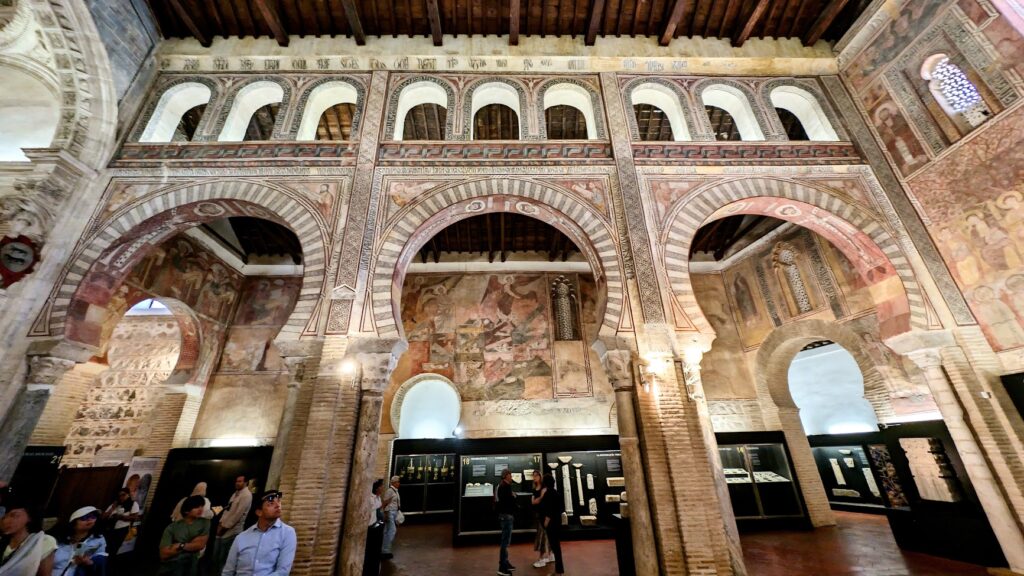
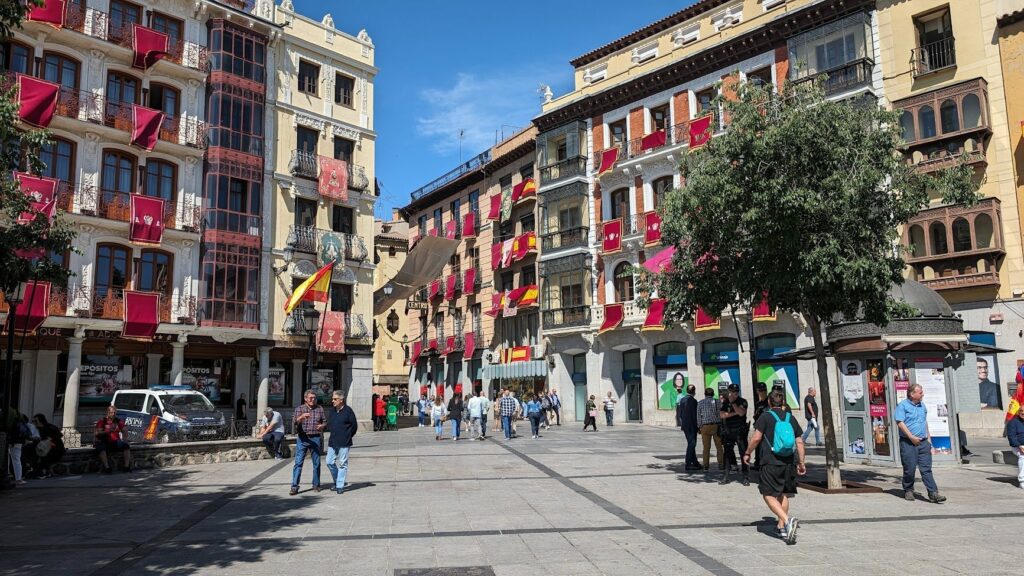
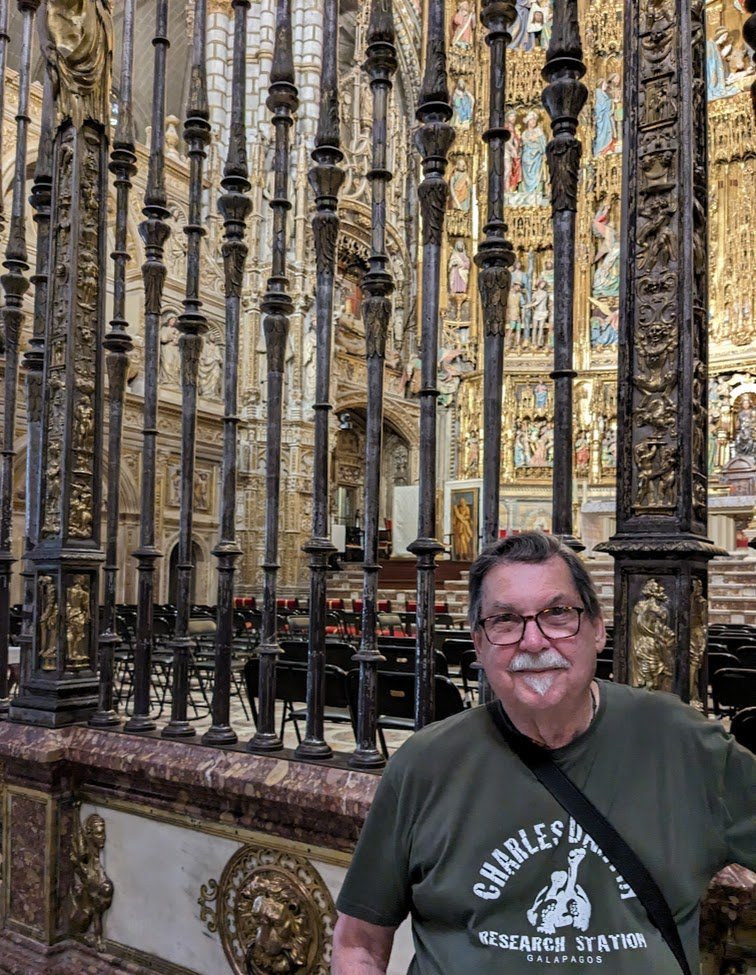
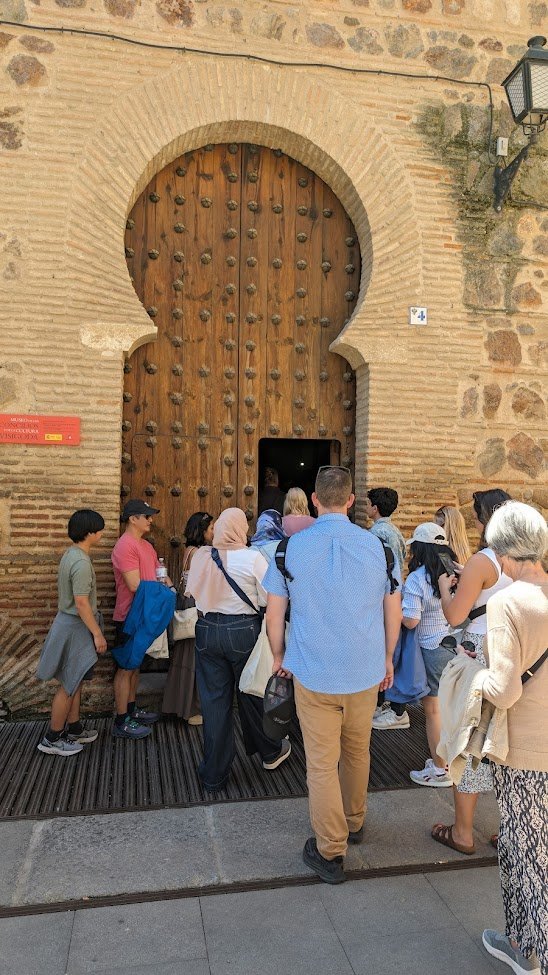
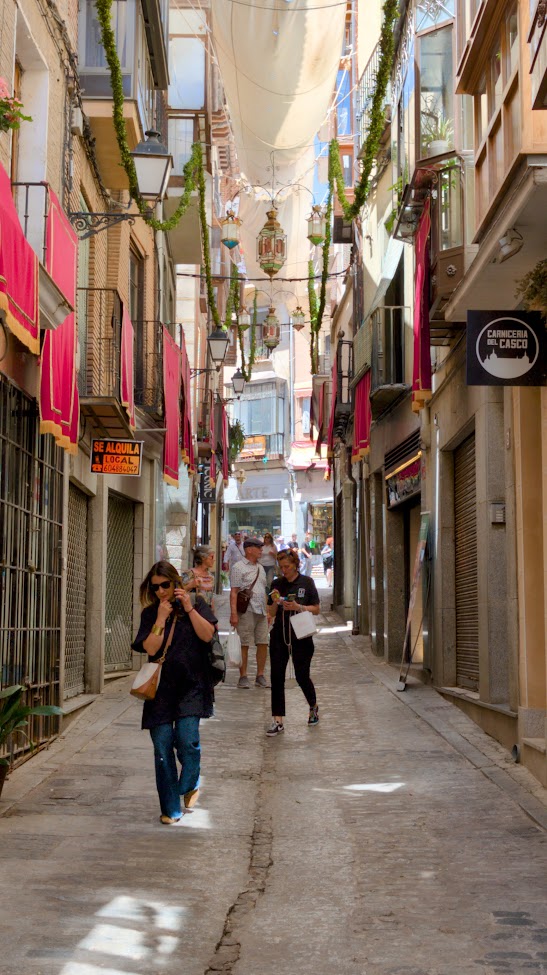
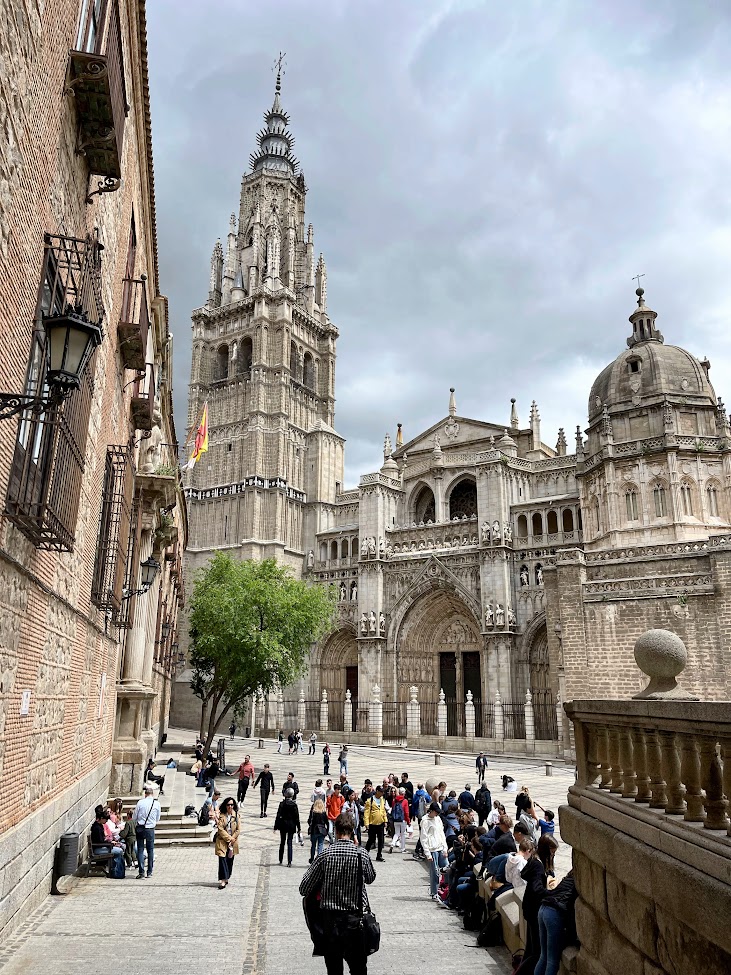
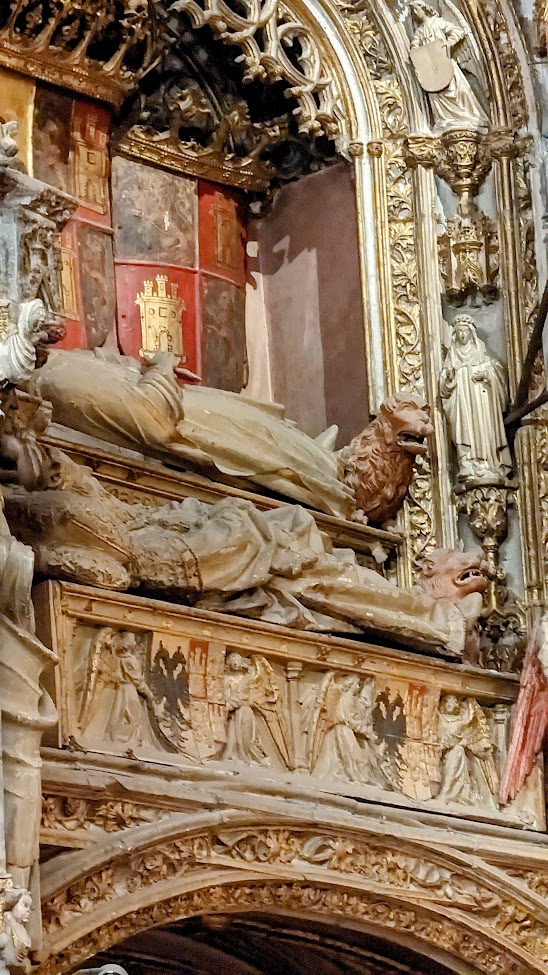
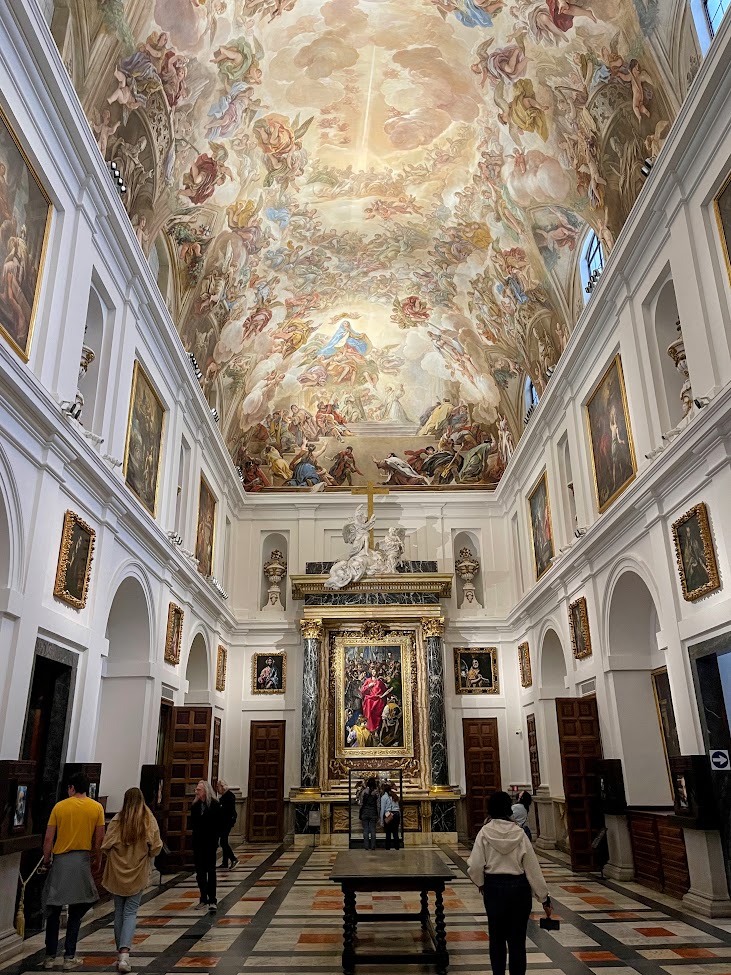
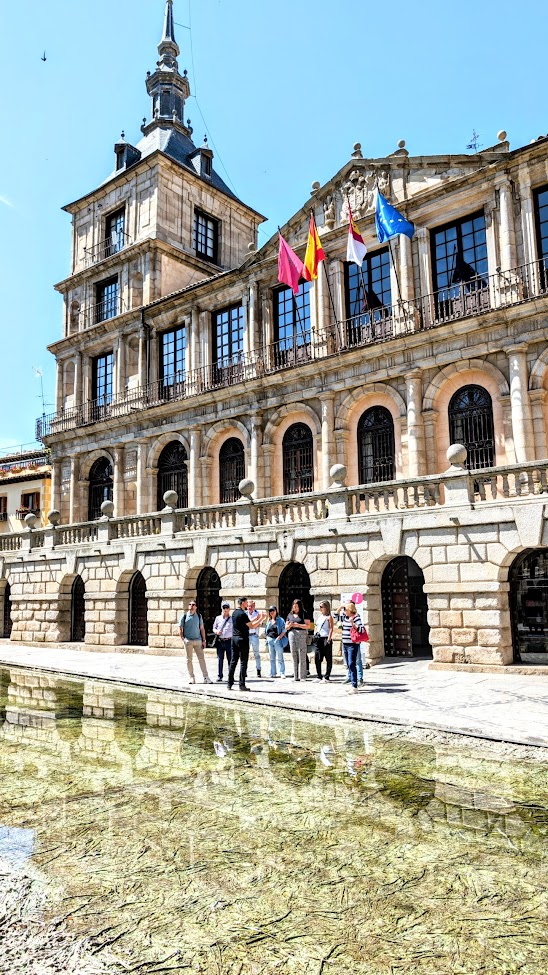
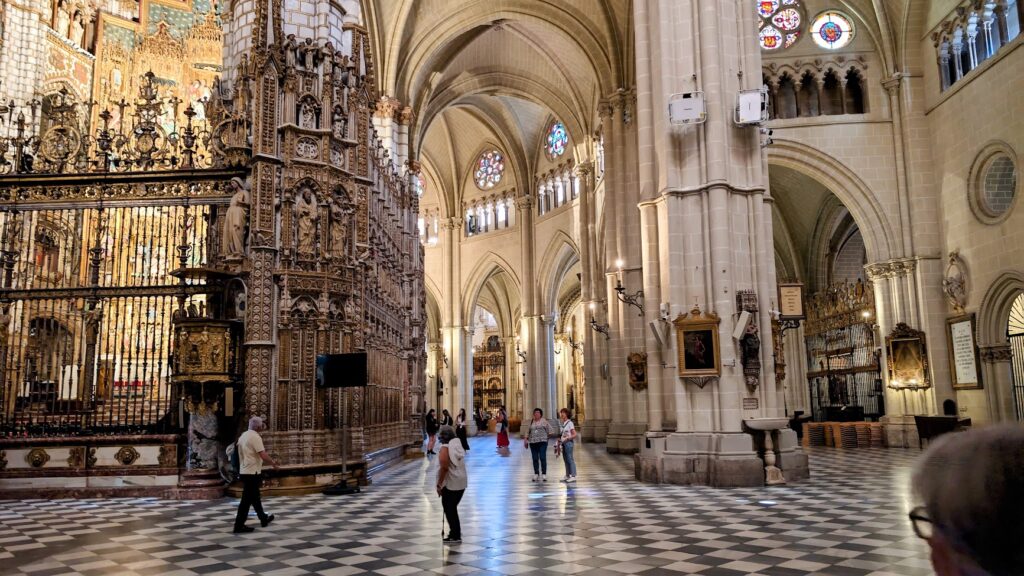
You’re probably thinking, there he goes again. But, it’s what I do. I’ve been doing a deep dive into our family history for the last five-plus years and discovered that a handful of my direct lines lead to the French/English Plantagenet Royals (12th-13th centuries). In those days, it was common for royals throughout Europe to marry off their sons and daughters for political and economic gain. So once you’ve established lines to the Plantagenets, there’s a good chance you have royal ancestors throughout Europe.
My line connects Spain and England through Leonor (Eleanor) born 1241, who became queen consort of England. I could get deeper into the genealogy weeds, but I would lose the few of you who have made it this far. So we’ll leave it at that.
Anyway, Great Grandpa x 26 Alphonso VII was the first Christian Monarch to be buried in the massive Toledo Cathedral. Finding his resting place was a real challenge. Toledo Cathedral is one of the largest and most important in Christendom and many notables are buried here. After peeping at every nook, chapel, and crypt for Grandpa’s tomb without success, I was getting frustrated and running out of time. Before one last look around, Mary insisted we stop for a Google search. Miraculously, she found it. The problem was we couldn’t get near it.
Grandpa’s stone sepulcher occupies prime real estate on the side of the sumptuous towering Main Chapel. It’s the heart of the Cathedral — a golden masterpiece of the Spanish Renaissance that took 10 years to complete. His prominent resting place isn’t surprising given that the Cathedral was built by his son, Fernando III, also a king and later made a saint. (He’s my 25th Great-Grandfather. You’ve probably heard of him. They named the San Fernando Valley after him.)
Today, black wrought iron bars keep visitors outside the Main Chapel, but we could see in. Grandpa’s stone tomb pales next to the gold-covered carvings that glow in the cathedral’s shadowy light. Besides my ancestor, it also houses over a hundred relics, including thorns that crowned the crucified Christ. All reasons for security…even if you are family.
I tried to take a selfie with Alphonso’s tomb, but the iron bars got in the way. So I just posed in front of the chapel, not knowing whether to smile or look serious. I managed neither one.
We would have lingered a bit longer, but our train left in an hour. We hiked back to the main square in search of a taxi. None. So we hopped on a bus heading for the train station. Unfortunately, we got off the bus about a mile too early. More walking in the scorching sun, more waiting in line, and more hustling to our coche, the last one on this mile-long train. We just settled into our seats as the train began its journey back to Madrid.
We may have not had a proper family reunion with my ancient and illustrious Spanish ancestor, but we did get to pay our respects. I’m sure Alphonso would have been impressed that his 26th Great-Grandson came all the way from a faraway place called San Diego to visit him.
